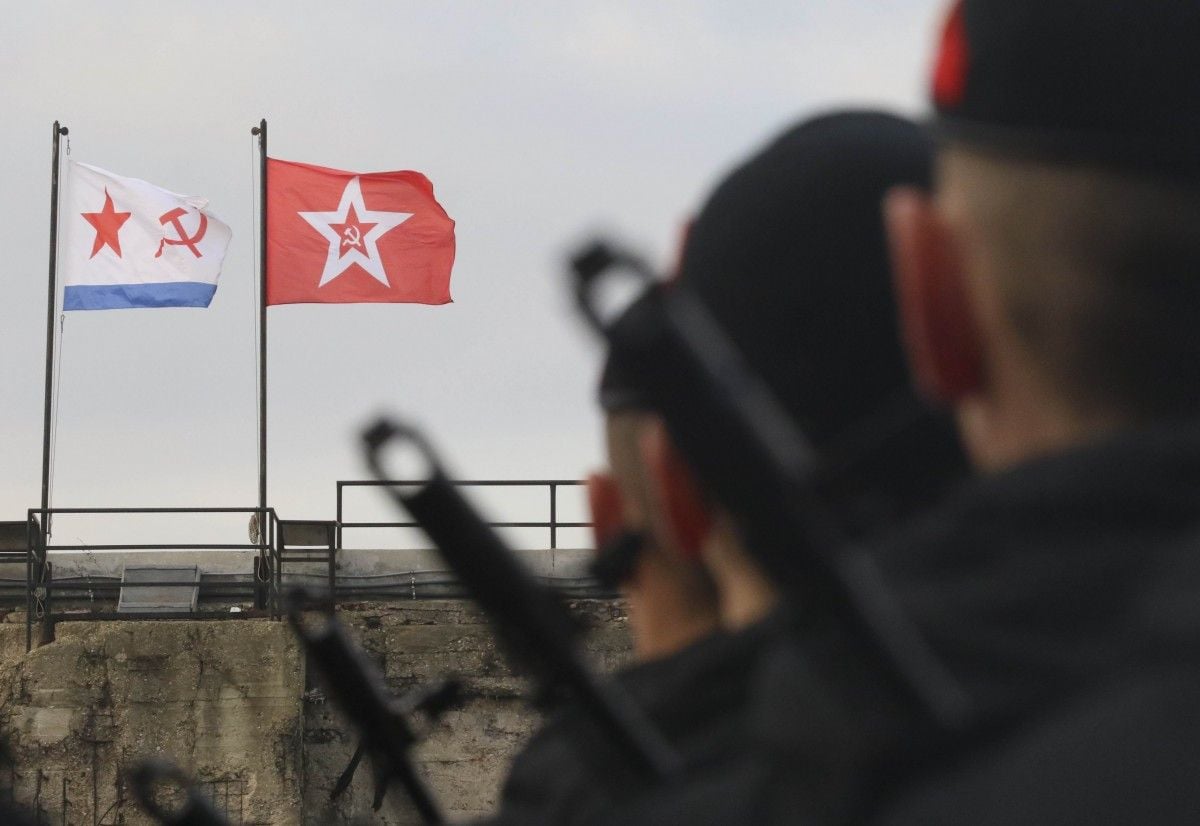
On March 18, 2020, Russian President Vladimir Putin visited Sevastopol, home of the country's Black Sea Fleet, and delivered a rousing patriotic speech commemorating the sixth anniversary of Russia's "reunification" with Crimea. The following day, likely not coincidentally, Security Service of Ukraine (SBU) agents arrested on espionage charges a Ukrainian from Mykolaiv who had been seeking intelligence on advanced Ukrainian naval technology to sell to Russia's Federal Security Service (FSB).
It is not surprising that the SBU would uncover a spy for Russia in Mykolaiv, which for decades housed the most advanced shipyards in the Soviet Union, The Jamestown Foundation reported.
The SBU's announcement tersely stated only that the suspect was attempting to sell "classified shipbuilding information" to Russia. Yet, it is possible to deduce what the specific target likely was: notably, Ukraine's shipyards maintain an advantage over those of Russia in the construction of maritime gas turbine propulsion systems. Russia has been unable to master this high-technology area since Ukraine's post-2014 ban on advanced military exports to Russia. As such, the technology certainly remains high intel priority for Moscow.
While all countries seek some level of economic autarky or self-sufficiency in the production of armaments, the post-Soviet states are particularly vulnerable in this regard. First of all, the former Soviet Union's centralized economic planning and resource deployment ignored market considerations; and second of all, Soviet industrial production chains were deliberately dispersed among the various constituent republics, which become independent states following 1991. The Soviet Union's most advanced shipyards were concentrated in Ukraine: thus, all three classes of Soviet aircraft-carrying cruisers were built at the Mykolaiv Communal Shipyard (renamed the Black Sea Shipyard following the fall of the Soviet Union), including the Russian navy's current flagship, the Admiral Kuznetsov.
Read alsoSpy channel uncovered between Ukraine's naval officer, Russia's FSB – media
On May 20, 2015, a little over a year after Russia forcibly wrested Crimea away from Ukraine, the Ukrainian prime minister at the time, Arseniy Yatseniuk, said that the Cabinet would terminate the May 26, 1993, bilateral agreement on military-technical cooperation with Russia, stating, "The Russian Federation is an aggressor state; the Russian Federation has illegally annexed Crimea; the Russian Federation has conducted military intervention on the territory of Donetsk and Luhansk regions [Donbas]; the Russian Federation is a danger to the Ukrainian state and its territorial integrity. And that is why the agreement on military-technical cooperation with Russia is being broken by the Cabinet of Ministers of Ukraine."
While maritime gas turbines may well have been the prime target for the Mykolaiv spy, a number of other Ukrainian weaponry innovations could also have been of interest to the FSB- particularly those weapons systems with the potential to erode Russia's near-monopoly on arms exports to the Middle East. These include an analogue of the Russian Iskander tactical missile system that Kyiv is developing with Saudi money, the Hrim-2; a powerful Ukrainian electromagnetic radiation generator to neutralize air-defense radars; high-precision weapons-guidance systems; automatic troop control-and-communications systems Ukraine is researching in conjunction with the United Arab Emirates; as well as licensed production in Jordan of Korsar anti-tank missile systems produced by the Ukrainian company Luch.
The Ukrainian government is taking the espionage charges seriously: the captured Mykolaiv resident is being accused of treason. While the naval disparity between Russia and Ukraine is vast, Soviet-era military-industrial legacies as well as the fact that these two neighbors share the northern Black Sea coastline mean that the Mykolayiv incident is unlikely to be the last.

